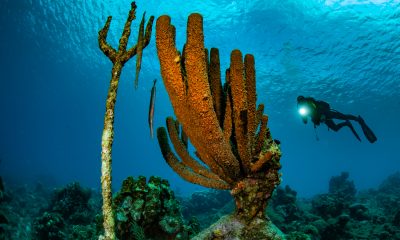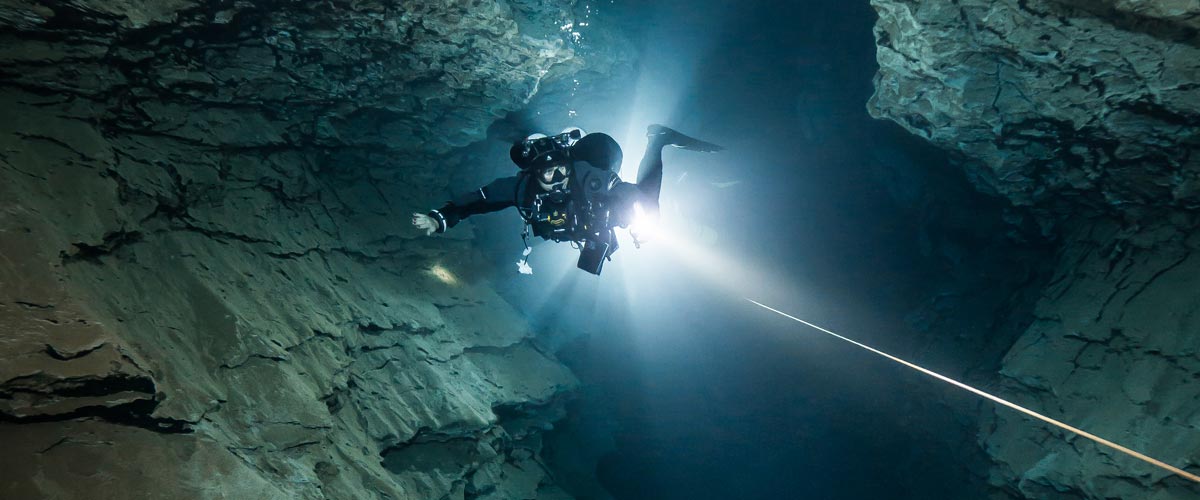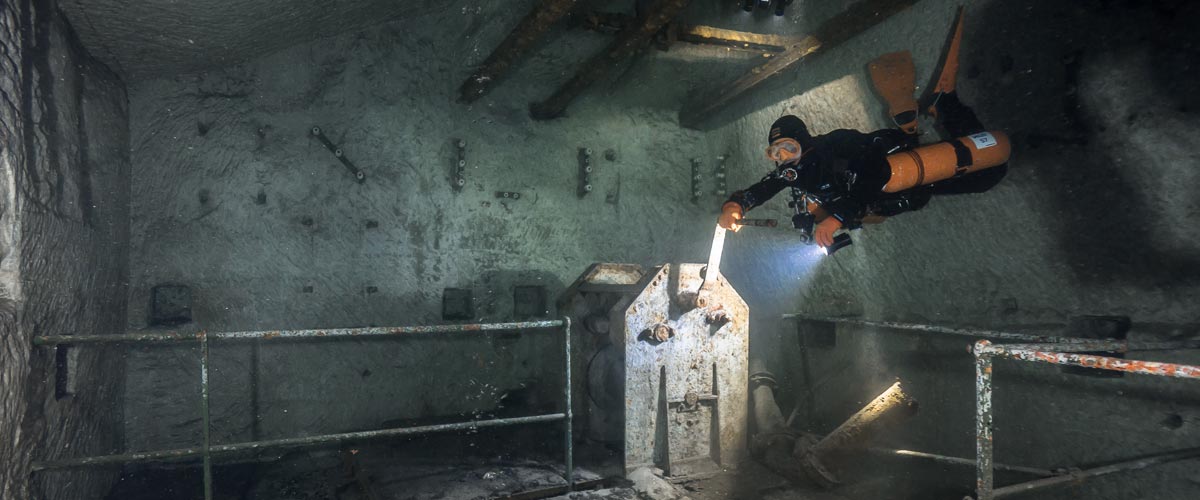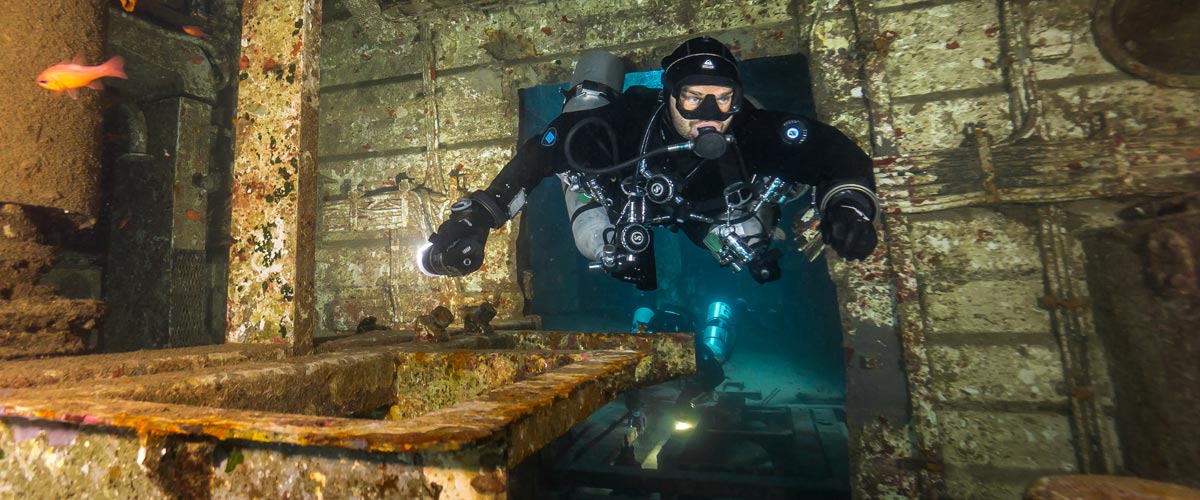Dive Training Blogs
Swift Water Rescue Training for Public Safety Divers
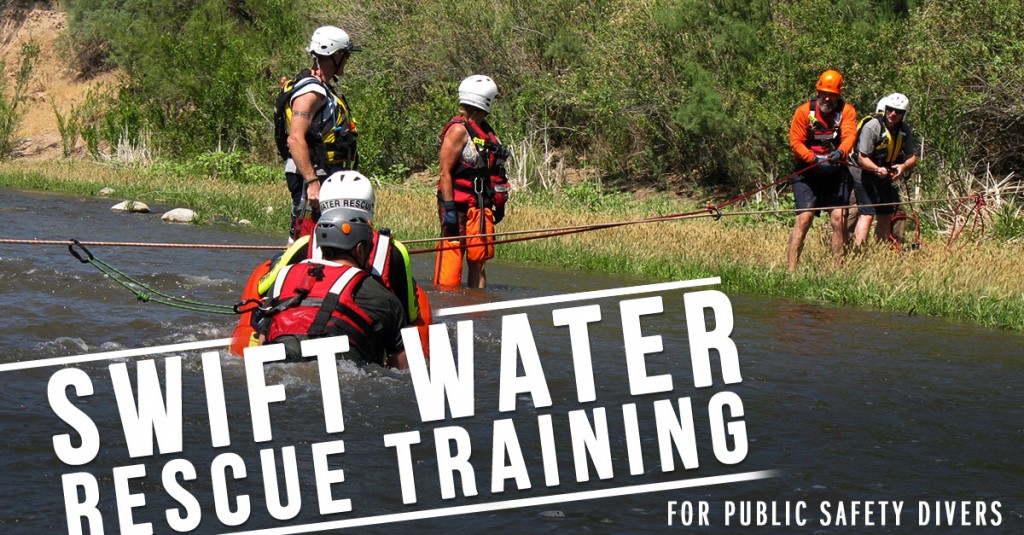
By: Eric Brooks
It is important for swift water rescue teams to practice scenarios that they will likely encounter when responding to a mission. It is equally important that swift water rescue teams pay attention to the actions of the public when they are conducting training; rescue situations may arise while training scenarios are being completed.
As part of our regular training regimen, the Cochise County Sheriff’s Office Search and Rescue Swift Water team heads 250 miles north to the Salt River for its annual pre-monsoon, pre-Swift Water Rodeo training. The schedule typically consists of swift water skills training for new members of the team and refresher skills, such as throw bag practice and paddling skills, for seasoned members of the team. Additionally, current members of the team act as victims for the new “students.” The day starts early and ends with a late drive back to Sierra Vista, but all involved will agree that the training is very beneficial and very important for honing skills prior to what could turn out to be a busy swift water season.
This year’s training started out no differently than any other year’s training
We arrived at the Phon D. Sutton Recreational area bright and early Saturday morning and began setting up for the day’s training. After unloading all of our gear and completing a safety briefing, we hit the water for self-rescue skills for new team members, and throw bag practice for current team members. The morning was spent floating down the rapid section (and swimming bank to bank) at the confluence of the Verde and Salt Rivers. This year, and unlike any of the years past, the Salt River was flowing lower than normal and the Verde River was flowing much faster than usual. What this meant for our rapid section is that the upper portion of the rapids was fairly mild, but the lower section of the rapids, below the Verde, was much more aggressive than it had been in the past. This was good for us, and we took advantage of the environmental change, using it as a way to switch up training from previous years.
After lunch, the training was to be moved to take advantage of the faster-moving water coming down the Verde River and to give the new team members a chance to work through scenarios using ropes and a rather large inflatable rescue board. The first evolution for the afternoon was to put three victims on the opposite shore and have the four new members bring them back to our bank using any rope system they could muster. Their only limitation was the equipment that we had carried with us across the Salt River.
Prior to completing the scenario described above, the new team members needed to negotiate a strainer as the last part of their self-rescue training. After considering all of the possible paces to set up the strainer and the hazards that were involved, a small section of rapids just above the confluence was chosen as the best place to complete the training. It was not necessarily an ideal place to complete this portion of the training, but it was sufficient and posed the least amount of problems for the dozens of people who were now at the river enjoying a day in the sun.
A young boy and what appeared to be his even younger sister approached the top of the rapid section
As the students and I began heading back across the Salt to set up the strainer and begin this evolution, a young boy and what appeared to be his even younger sister approached the top of the rapid section that we had chosen for our strainer practice (of course they were not wearing PFDs and no adult supervision was apparent). The senior members of the team had remained on the far side of the rapids in order to set up the far side anchor for the strainer and keep an eye out for any kayakers that may have been floating down the river. As I began climbing onto a rather large rock on my side of the rapids, ERDI Swift Water Instructor William Jordan (#13050) and CCSO Sergeant and SAR coordinator David Noland began communicating with me that the girl was having some difficulties with these mild rapids; she was attempting to grab the rock and climb out, but was unsuccessful. I quickly moved to a lower section of the rapids, below the rock I was traversing and found the girl attempting to climb out of the water.
There was a small Eddy and low spot in the rocks right at the very top of the confluence. As the girl tried to climb to safety, just before I could reach her, she was sucked backed into the water and into the much faster flowing, longer rapid section of the Verde. Having no one downstream of this point to catch her, I leaped into the water and swam as aggressively as possible to her. I was able to make contact with the girl just as her head went under in the most dangerous part of the rapids. We quickly grabbed the nearest Eddy and as I exited the water with her. A quick glanced down stream confirmed that her brother had climbed out of the rapids and onto the rocks.
The lessons here…
The lessons here for parents and the reoccurring themes that we constantly hear on the news every summer are: “Don’t let your kids near the water unattended” and “children should wear life jackets around water.” The lesson here for rescue teams is to be prepared and keep your eyes and ears open during training sessions. You never know when a training session will turn into an actual rescue. It is likely that had it not been for the keen observations of two senior members of our swift water team, I would not have been in a position to get to the girl and this could have quickly turned into a possible drowning, or worst yet a body recovery.
About the Author:
Eric Brooks, MEd, PhD, TDI/SDI/ERDI Instructor Trainer #8699, and owner of ProTech Scuba LLC, has been with the Cochise County Sheriff’s Office Search and Rescue unit as a volunteer since 1999. He is the senior swift water and dive team instructor and also teaches low angle rope rescue and land navigation.
Contact SDI TDI and ERDI
If you would like more information, please contact our World Headquarters or your Regional Office.
Tel: 888.778.9073 | 207.729.4201
Email: Worldhq@tdisdi.com
Web: https://www.tdisdi.com
Facebook: www.facebook.com/PublicSafetyDiving
To find out more about International Training, visit www.tdisdi.com.

Blogs
Intro to Tech: What is it about?
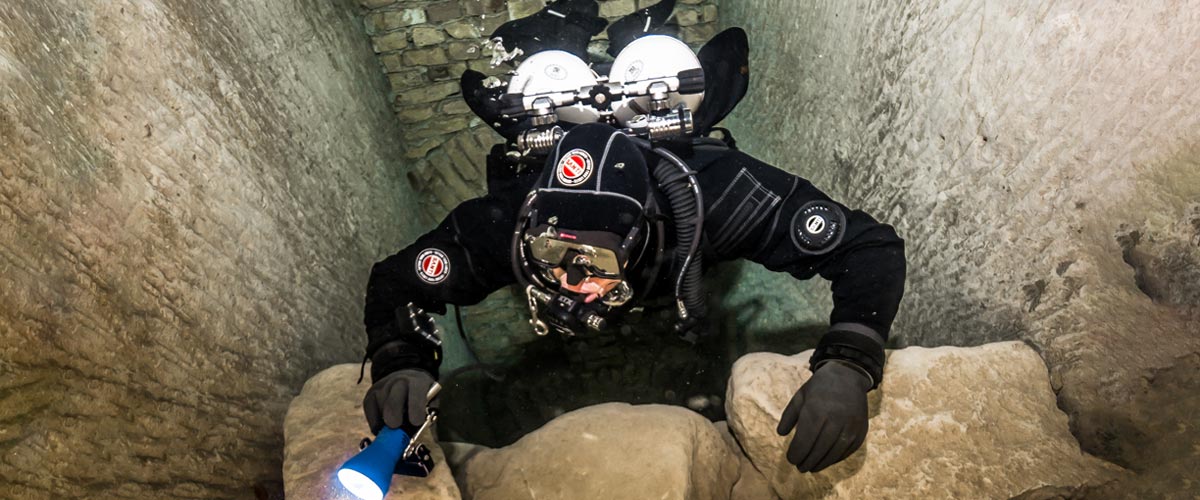
Article by José Pablo Mir
Pictures by Cezary Abramowski
The world of technical diving is exciting. It opens the door to new sites, depths, and bottom times. More importantly, it opens our minds to a new way of planning, facing, and experiencing dives, even those not purely technical.
Becoming a technical diver is a process, and like in other aspects of life, we should find the proper entry point that suits us best based on our knowledge and experience. The Introduction to Technical Diving course from TDI -the world’s largest and most recognized technical diving teaching organization- is the best option for divers who have yet to gain experience in the fundamental aspects of this new practice. The course’s content and its embrace of new techniques and technologies make it possible to acquire a solid foundation to learn and gain experience in this practice properly.
Becoming a technical diver is not something that happens overnight, whether deciding to become one or receiving a certification card stating we are now technical divers. It is a slow process extending farther away than any introductory course. It requires effort and dedication. But it will bring us satisfaction from day one -or two.
It is a matter of mentality
First, we must understand and accept that technical diving, involving greater depths, longer bottom times, exotic gases, virtual or real ceilings, and more, comes with higher levels of risk than the sport diving we have been practicing until now.
Although this discussion usually starts with a warning about risks, as I’ve done in the previous sentence, our practice is not a game of chance.
Technical diving is a rational activity that requires maturity and good judgment, and we will put everything into ensuring that each dive is a successful one -meaning we return from it safe and sound. With this understanding, we will strive to establish a mental attitude more aligned with our practice and its realities.
This new “technical diver” mindset we will develop will lead us to be more cautious in our executions, more analytical in our plans, more rational in our strategies, and more detailed in our procedures.
Experience will keep teaching us to know ourselves better, to keep our anxiety and other emotions under control, and to manage our impulses. Over time, our senses will sharpen, and we will be more attentive to the particulars of the situation we find ourselves in.
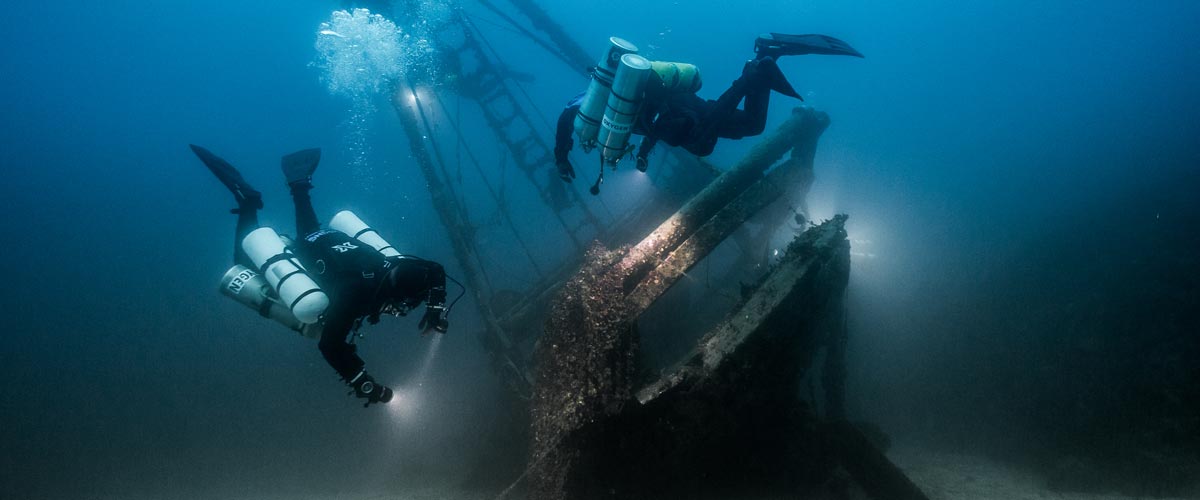
Strategies and procedures
Our strategies, those broad guiding lines tracing the path to follow, from how to approach planning to where, with what, and how we are willing to get there, will be more specific and more practical. Not because they magically become so, but because we will consciously and deliberately frame them that way.
We will establish clear, concise, and realistic procedures. Not only for the undesirable situations that may present themselves but also for those that are part of our dive objectives.
Even though, as technical divers, we often use equipment different from what we were previously accustomed to, it is essential to note that the gear does not make the diver. In a way, we could consider such equipment as the necessary tools to implement what our goal seeks to achieve, according to our strategies and procedures.
Technique plays an important role
We must put our greatest effort into learning and perfecting the different techniques we will be acquiring. Buoyancy, trim, propulsion, cylinder handling, deploying DSMBs and lift bags, valve drills, and more are essential skills we must begin to master to progress in our art. What we cannot do, when we need to do it, can harm us.
Our techniques must be effective and achieve the purpose for which they were devised. But they must also be efficient and require the least resources possible, including the time they take and the effort they demand. Effectiveness and efficiency will prevail over beauty and other considerations that may come to mind, although none of them should be mutually exclusive. A technique executed efficiently and effectively tends to have an inherent beauty.
Refining techniques is a lifelong mission. Some of them will be easy to master from the go; others, on the other hand, will be our life mission and will require many repetitions just to resemble the idea we have in mind of how they should be executed.
We must consider the environment
Our learning, the needs and musts of the practice we engage in, the experience we gradually gain, our strategies and procedures, and even our equipment and tools change with the environment.
Diving in the ocean, everything about us must be suitable for ocean dives. Conditions there rarely emulate those found in a pool, lake, or river. Variable winds and currents, greater depths, visibility conditions, other divers with uncertain skills around us, marine life, maritime traffic, distance from the coast, and many other factors add complexity and uncertainty.
It is never necessary to master the pool on the first day, but planning and aspiring to gradually cope with the ocean’s conditions is essential.
The cost of good training
We are aware that our resources are often scarce in relation to the possibilities of use we could give them if they were not. To a greater or lesser extent, we are part of the economic reality in which we are embedded.
Fortunately, the cost of good technical diver training is not an entry barrier. Comparing training and equipment costs, we see that the former are generally lower. Yes, lower cost for personalized service, essential to our future
performance and safety, than for a series of mass-produced products that are mere, albeit necessary, tools for an end.
The value of good training
The value of the training we received encompasses a range of characteristics, from emotional and methodological to technical and technological. TDI and its Introduction to Technical Diving course offer a deep and modern approach, with a teaching strategy that aims to create thinking divers, not merely obedient ones.
As technical divers, our knowledge is our primary tool. In this type of activity, what we don’t know can harm us.
Is this course optional?
Unfortunately, the fact that this Introduction to Technical Diving course is not a prerequisite for any subsequent training is an invitation to consider it optional. And we all know what usually happens to “optional” under budget constraints.
However, this course should be seen as optional only by those divers who are somehow familiar with the use of technical equipment, who have a mindset more in line with the requirements of this type of diving, who plan and execute the dives the proper “technical” way, who know their gas consumption rate, who are not intimidated by non-decompression tables, who feel comfortable using their dive computers, and know the techniques and have at least an acceptable level of buoyancy, positioning, and propulsion. Those can go straight to a more advanced training course, such as TDI’s Advanced Nitrox.
We must ask ourselves whether or not we are in that group.
Remember our goal: to have fun
Recreational diving is our passion. Jumping into the water carrying heavy equipment and having properly dotted our I’s and crossed our T’s have only one ultimate goal: fun. This is the activity we have chosen as a hobby. We must enjoy it; it must give us pleasure and make us vibrate.
Having a good time is not optional!
Blogs
Four opportunities to go pro in 2024 with Dive Friends Bonaire
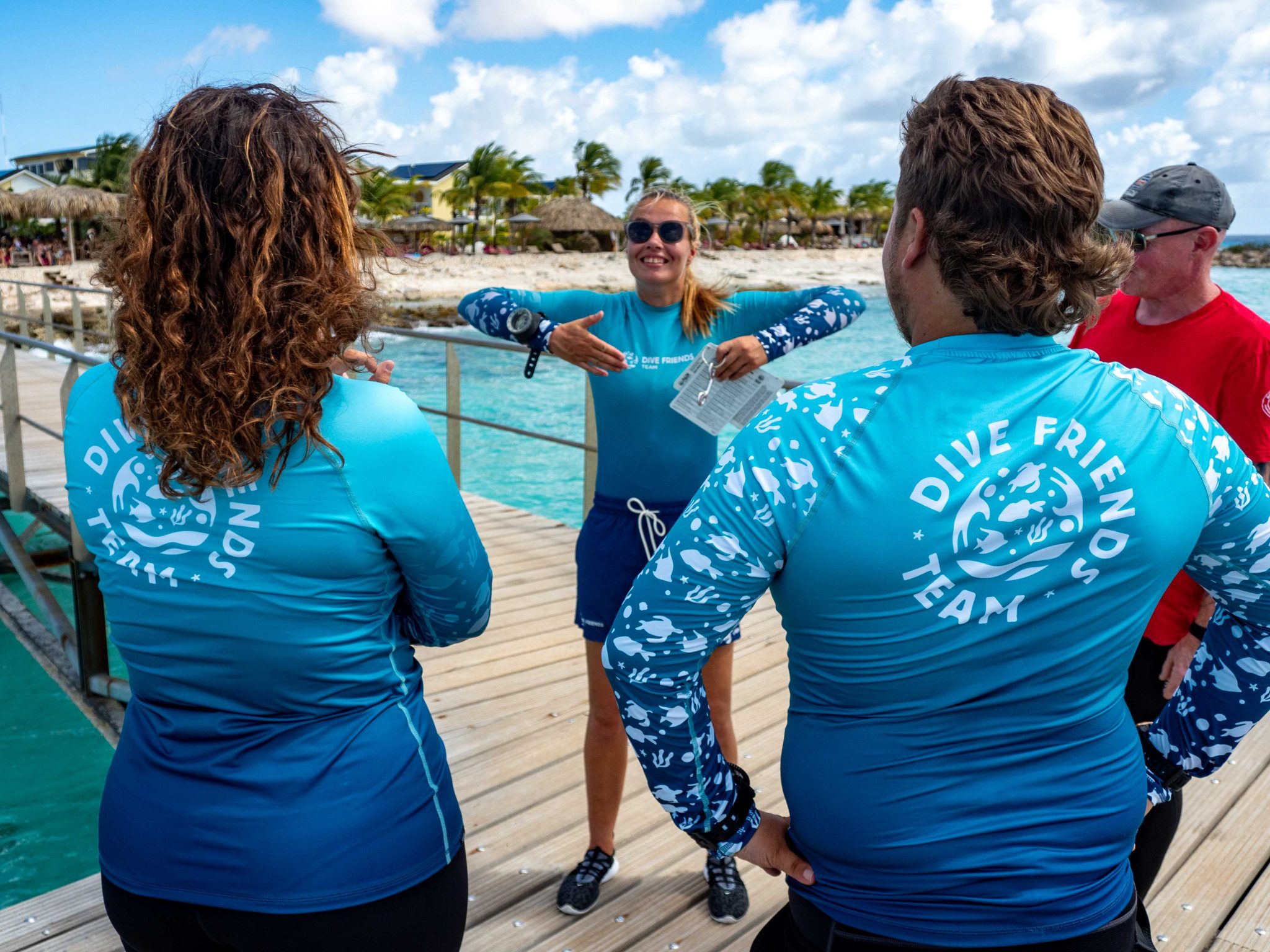
Dive Friends teaches the Instructor Development Course (IDC) several times a year to students who are eager to share their passion for diving with the world.
Dive Friends is known for the personal approach throughout the course. Their in-house course director will lead the students through every essential step, mentoring them to achieve their fullest potential as a dive instructor.
Applications for the following IDC start dates are now open:
- 12 April
- 5 July,
- 20 September
- 29 November
Partnership with Casita Palma
If the student opts for the IDC-Deluxe or IDC-Supreme package, their accommodation will be arranged for them at Casita Palma. This small and quiet resort is within walking distance from Dive Friends Bonaire’s main dive shop location and has everything you need to relax after an intense day of IDC training. Breakfast is included, so the student will always be fuelled and ready for their day.
Contact Dive Friends Bonaire’s Course Director Eddy for more information: coursedirector@divefriendsbonaire.com.
-

 News3 months ago
News3 months agoHone your underwater photography skills with Alphamarine Photography at Red Sea Diving Safari in March
-

 News2 months ago
News2 months agoCapturing Critters in Lembeh Underwater Photography Workshop 2024: Event Roundup
-

 Marine Life & Conservation Blogs2 months ago
Marine Life & Conservation Blogs2 months agoCreature Feature: Swell Sharks
-

 Blogs1 month ago
Blogs1 month agoMurex Resorts: Passport to Paradise!
-

 Gear News3 months ago
Gear News3 months agoBare X-Mission Drysuit: Ideal for Both Technical and Recreational Divers
-

 Blogs2 months ago
Blogs2 months agoDiver Discovering Whale Skeletons Beneath Ice Judged World’s Best Underwater Photograph
-

 Gear Reviews2 months ago
Gear Reviews2 months agoGear Review: Oceanic+ Dive Housing for iPhone
-
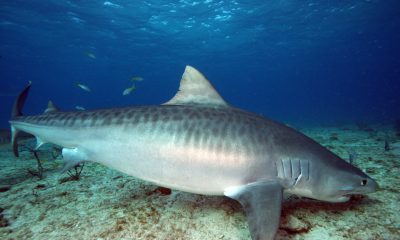
 Blogs3 months ago
Blogs3 months agoThe Thrilling Encounter with Tiger Sharks at Beqa Lagoon’s ‘The Colosseum’ with Coral Coast Divers











